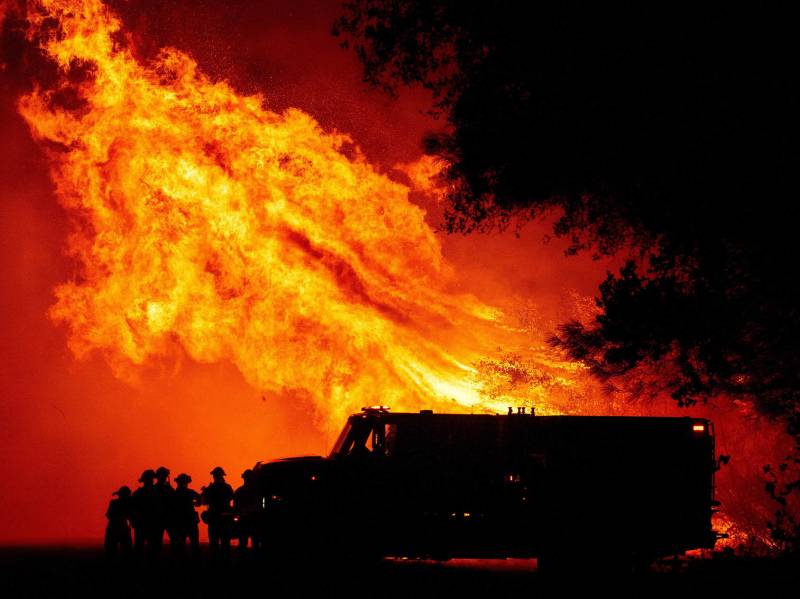The alarming wildfires across the West have got people thinking, once again, how to prevent or at least minimize the catastrophic fire seasons we’ve been experiencing. KQED science reporters Danielle Venton and Molly Peterson talked with KQED radio host Brian Watt last week about what the state is and isn’t doing to lower fire risk and minimize the destruction caused by large fires. The following has been edited for length and clarity.
You have been reporting for a while on some of the possible solutions to California’s wildfire problem, like prescribed burns …
Molly Peterson: Right, the idea that we plan to put fire on the land safely [with the intent of burning up in advance the vegetation wildfires use for fuel.] I have reported from Trinity County about people who want to do that, but they run into bureaucratic obstacles, and I’ve reported about the technical and safety reasons these burns get delayed.
Danielle Venton: We have also talked about how to make buildings less flammable, and about clearing space around them to slow an advancing fire.
But you’ve talked about these things for years, and it feels like not as much of it’s getting done as we need.
Venton: That’s exactly the problem. One example: In the early 2000s, up until 2017, an average of just 13,000 acres were intentionally burned in the state every year. In 2018, new laws were passed to try to make prescribed burns easier, and 87,000 acres were burned that year. But scientists believe we need to increase that amount by at least five times. So there’s a long way to go.
Peterson: Another example: In 2008, lawmakers passed this transformative set of requirements that has saved houses from big fires in Santa Rosa and Paradise. But 12 years later, houses built before that law still sit in the path of these monster fires, and we’re still not doing for fires what we do for earthquake risk, which is expand requirements and spend money on retrofitting.
Venton: Overall, we do see the state spending more money on fires, but experts say it’s not enough to do what they recommend. And it’s a sign that we’re not changing our mindset about fires dramatically enough.

